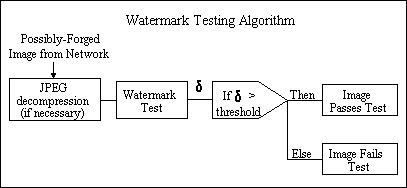
The recent growth of networked multimedia systems has increased the need for the protection of digital media. This is particularly important for the protection and enforcement of intellectual property rights. Copyright protection involves the authentication of image ownership, and the identification of illegal copies of a (possibly forged) image. Techniques are needed to prevent the copying, forgery and unauthorized distribution of images and video. Without such methods, placing images on a public network puts them at risk of theft and alteration. The basic scenario is as follows: A user has created an electronic image at some effort and expense, and wants to make it available on a communications network. When unauthorized copies or forgeries of the image appear elsewhere on the network, the user needs to prove that the image belongs to them. One also needs to determine if and by how much the image has been changed from the original.
Many approaches are available for protecting digital data; these include encryption, authentication and time stamping. One approach to protect images is to add an invisible structure to an image that can be used to authenticate it. These structures are known as digital watermarks. In this project we have developed two techniques for the invisible marking of images. One is called the Constant-Watermark Two-dimensional algorithm (CW2D), and the second is the Variable-Watermark Two-dimensional technique (VW2D). We have analyzed the robustness of the watermarks with respect to linear and nonlinear filtering, and JPEG compression. The results show that our watermarks detect all but the most minute changes to an image. The block diagrams in Figures 1 and 2 below describe the watermarking and test procedure. Delta is a measure of how much the watermark has been altered as a result of changes to the images.

Figure 1. Overall image watermarking procedure.

Figure 2. Authentication procedure for watermarked images.
The Purdue Multimedia Testbed is working with Intellectual Protocols 2 to further develop image watermarking algorithms. Future research includes watermarking paletized images as well as video sequences.
Below are several original and watermarked images (JPEG Quality Factor = 90).
Original picture of vegetables
Watermarked picture of vegetables
Watermarked picture of currency
The watermark used for these pictures is also present.
More detailed information may be found in our publications.
A complete set of our recent publications are available here.